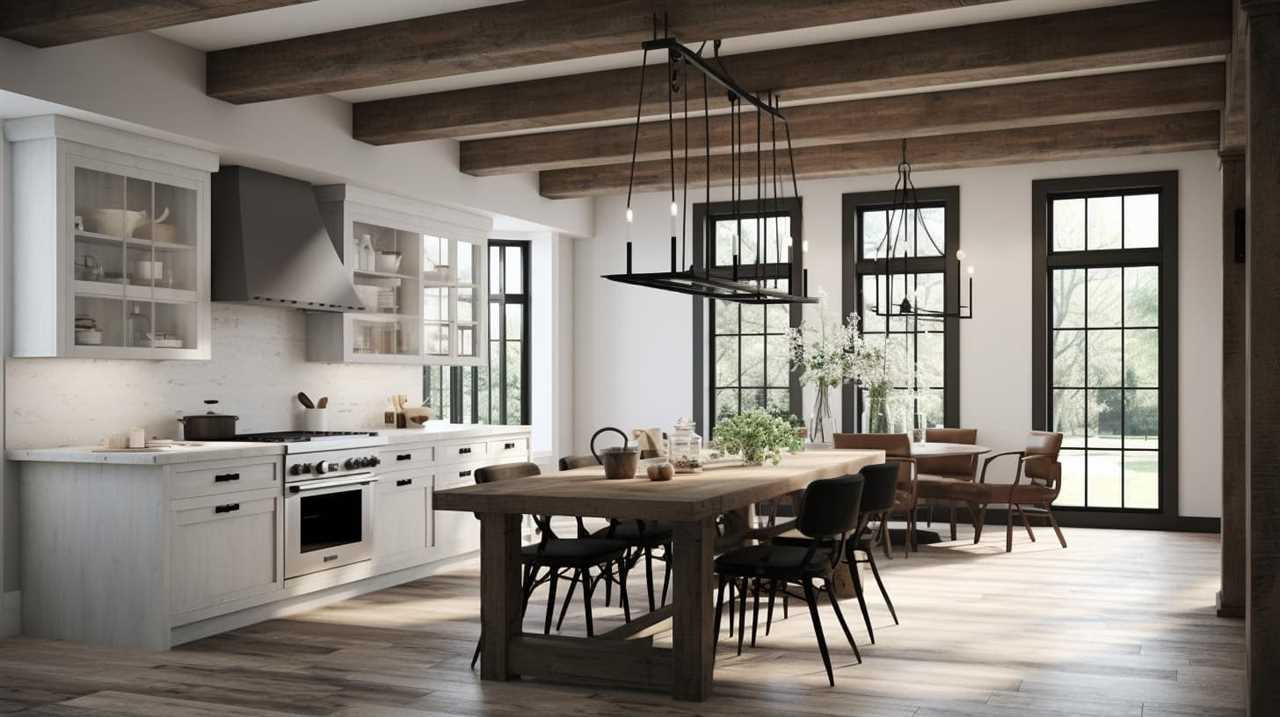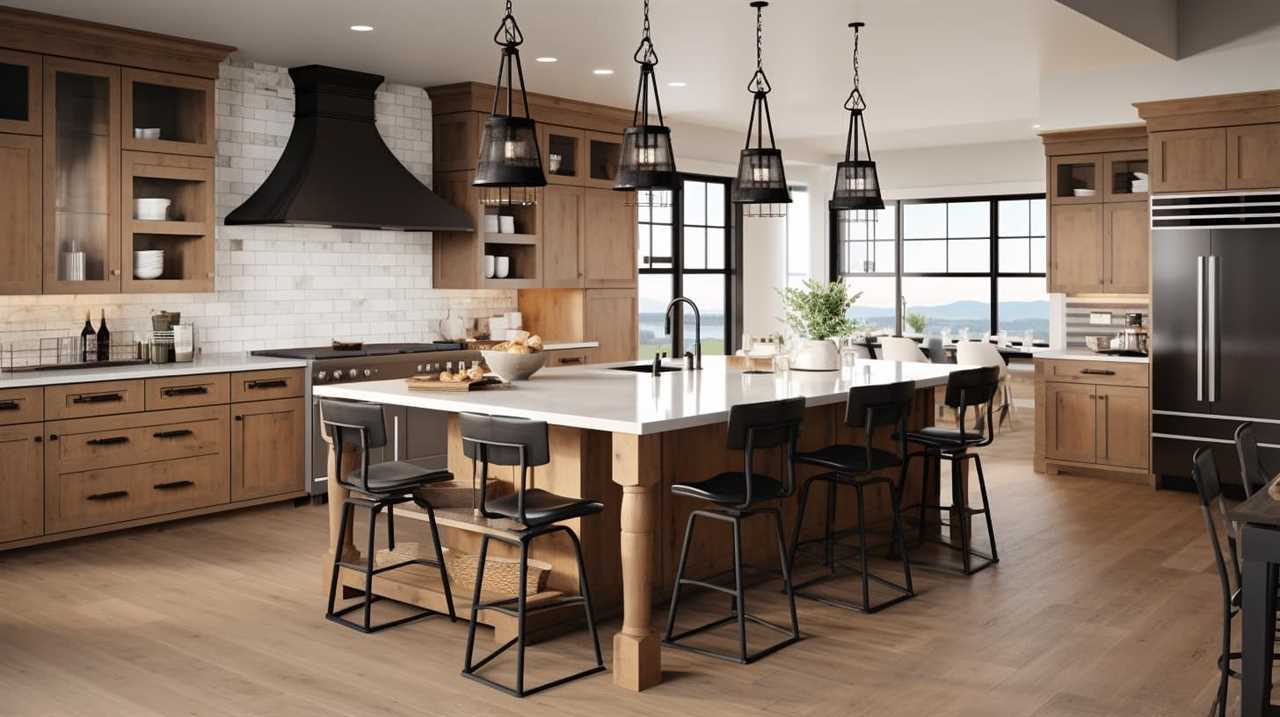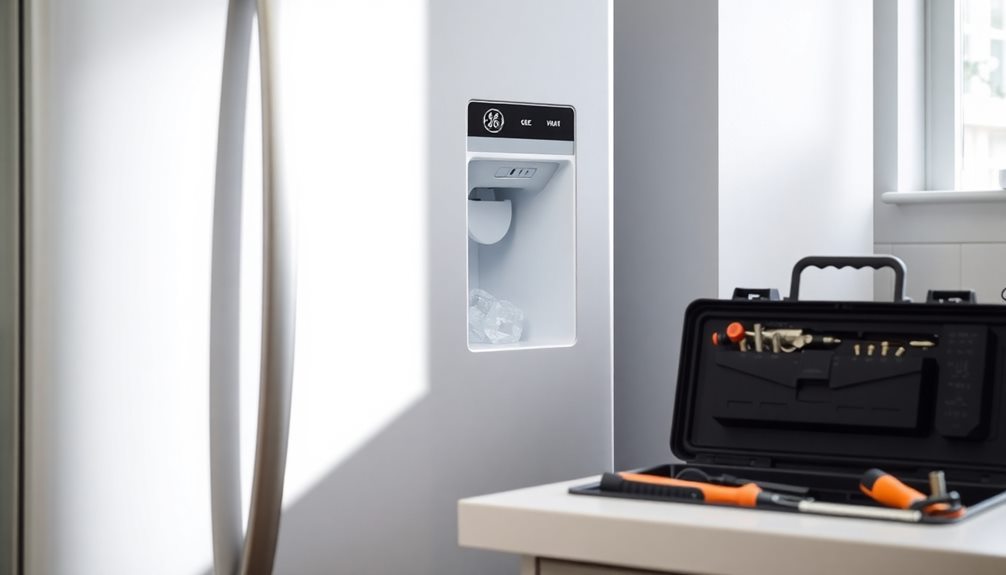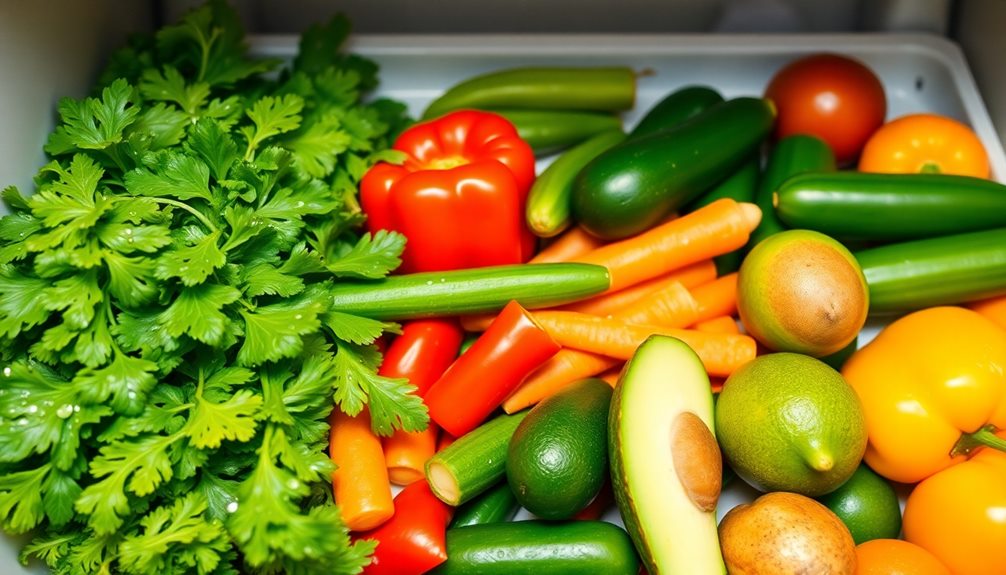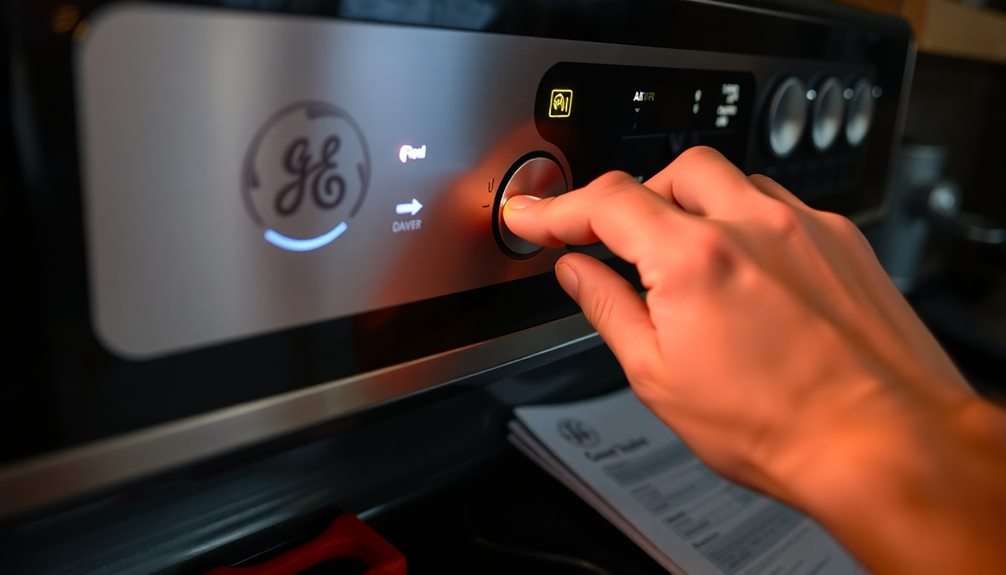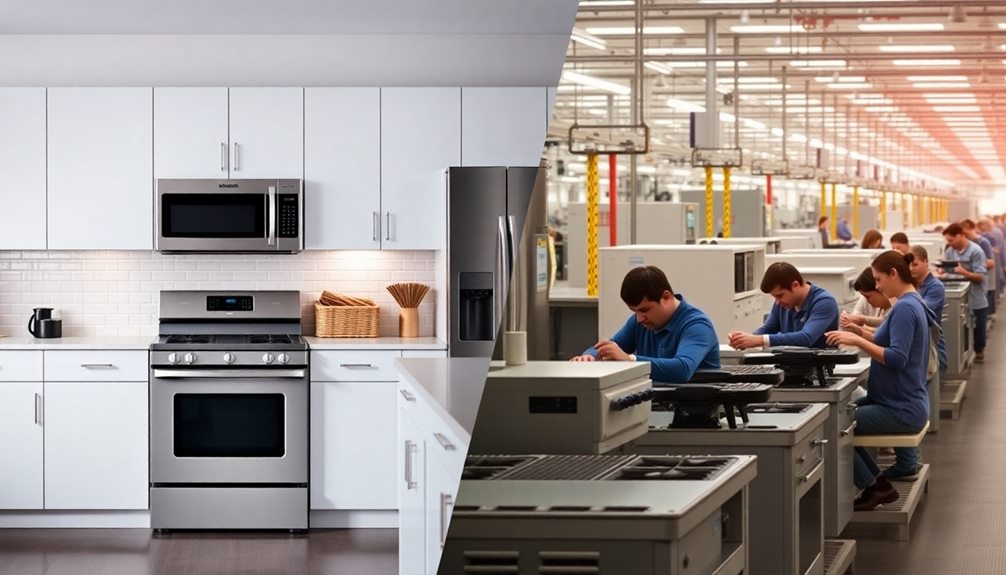Can 220v appliances function in 110v countries?
Well, we’ve got the answers for you.
In this article, we’ll dive into the world of voltage systems and explore the options for converting voltage.
From step-down voltage converters to power adapters and plug types, we’ll provide you with the necessary information to check appliance compatibility and ensure safe usage.

So, let’s embark on this journey together and discover if your 220v appliances can thrive in 110v countries.
Key Takeaways
- Using 220v appliances in 110v countries can cause damage or malfunction due to incompatible voltage systems.
- It is important to check if appliances are designed to operate on both 220v and 110v electrical systems.
- Voltage converters or transformers can be used to adapt the voltage and safely use 220v appliances in 110v countries.
- Appliances designed for 220v may not operate at full capacity with a lower voltage, resulting in reduced performance and efficiency.
Understanding Voltage Systems
To understand voltage systems, we need to start with a simple preposition: voltage is the measure of electrical potential difference between two points in a circuit.
When it comes to voltage system basics, it’s crucial to understand the electrical standards that govern them. Electrical standards outline the acceptable range of voltages for different applications and ensure compatibility and safety.
In many countries, the standard voltage for residential areas is 110 volts, while others use 220 volts. Understanding these standards is essential for choosing the right appliances and equipment for specific locations.

It’s also important to note that using appliances designed for one voltage standard in a different standard can lead to damage or malfunction. Therefore, having a clear understanding of voltage systems and electrical standards is fundamental for anyone seeking mastery in the field of electricity.
Voltage Conversion Options
We have several options for converting the voltage from 220v to 110v in countries with a different standard. One option is to use voltage converters, also known as voltage transformers or power converters. These devices are designed to convert the electrical voltage of an appliance or device to match the voltage of the country you are in. When choosing a voltage converter, it is important to consider the wattage and the type of appliance you will be using. Another option is to use a travel adapter that includes a voltage converter. These adapters are convenient for international travel as they allow you to plug in your appliances and devices while also converting the voltage. It is crucial to check the specifications and compatibility of the voltage converter or adapter to ensure it is suitable for your needs.
| Pros | Cons |
|---|---|
| Provides a solution for using 220v appliances in 110v countries | Can be bulky and take up space in your luggage |
| Allows you to use your own appliances while traveling internationally | Some voltage converters may not be compatible with all types of appliances |
| Convenient for travelers who frequently visit different countries | May require additional adapters for different types of outlets |
Step-Down Voltage Converters
Step-down voltage converters allow us to safely operate 220v appliances in countries with a 110v standard. These converters are essential in ensuring that the higher voltage from the appliance is converted to match the lower voltage of the country’s electrical system.
To give you a better understanding of step-down voltage converters, here are some key points to consider:

- Voltage converter brands: There are several reputable brands that offer step-down voltage converters, such as Simran, LiteFuze, Seven Star, and Bestek.
- Converting 220v to 110v: Step-down voltage converters are specifically designed to convert the higher voltage of 220v to the lower voltage of 110v, allowing you to safely use your appliances in countries with this standard.
Power Adapters and Plug Types
Our selection of power adapters and plug types offers a wide range of options to meet your specific needs when using 220v appliances in 110v countries. Power adapters are essential for converting the electrical output from the wall socket to match the voltage requirements of your appliance. These adapters come in various types and configurations to accommodate different plug shapes and sizes.
It’s crucial to choose the right adapter that fits both the socket and the plug of your appliance. Additionally, it’s recommended to use voltage regulators to protect your appliances from power surges and fluctuations. Voltage regulators stabilize the incoming voltage, ensuring a consistent and safe power supply for your devices.
When using power adapters and voltage regulators, you can confidently and safely operate your 220v appliances in 110v countries.
Checking Appliance Compatibility
To ensure compatibility, it’s important to check if your appliances are designed to operate on both 220v and 110v electrical systems. Here are some key points to consider when checking appliance compatibility:

- Understanding voltage regulations: Different countries have different voltage regulations, and it’s crucial to understand the voltage requirements of the country you’re visiting.
- Common voltage misconceptions: It’s a common misconception that all appliances can automatically adapt to different voltage systems. However, many appliances are designed to operate on either 220v or 110v, not both.
- Appliance labeling: Check the labeling on your appliances to see if they’re dual voltage compatible. Look for phrases like ‘110-220v’ or ‘dual voltage’ to ensure your appliance can be used in different voltage systems.
- Voltage conversion devices: If your appliances aren’t compatible with the voltage system in the country you’re visiting, you may need to use voltage conversion devices, such as transformers or voltage converters.
Understanding appliance compatibility is essential to avoid potential risks and limitations when using 220v appliances in 110v countries.
Potential Risks and Limitations
Before attempting to use a 220v appliance in a 110v country, it’s crucial to understand the potential risks and limitations involved. Electrical safety guidelines should always be followed to prevent accidents or damage to the appliance.
Additionally, adapting voltage requirements may be necessary, and it’s important to determine if the appliance is compatible with the lower voltage before use.
Electrical Safety Guidelines
When using 220v appliances in 110v countries, it’s important to follow electrical safety guidelines to mitigate potential risks and limitations. To ensure the safe use of these appliances, it’s crucial to adhere to electrical code regulations and employ proper grounding techniques.

Here are some key guidelines to consider:
- Proper Voltage Conversion: Use a step-down transformer to convert the 110v power supply to the required 220v for the appliance.
- Correct Wiring Connections: Ensure that the appliance is connected to the power source correctly, following the manufacturer’s instructions and local electrical codes.
- Appropriate Outlet Usage: Utilize grounded outlets that can handle the increased voltage requirements of the appliance.
- Regular Maintenance and Inspections: Regularly check the appliance for any signs of wear and tear, such as loose connections or damaged cords, and promptly address any issues.
Adapting Voltage Requirements
We must be aware of the potential risks and limitations when adapting voltage requirements for 220v appliances in 110v countries. Adapting voltage requirements involves the use of voltage converters, which are devices that convert the voltage from one level to another.
However, it’s important to note that not all appliances can be adapted to work with a different voltage. Some appliances, especially those with motors or heating elements, may not function properly or may even get damaged when used with a voltage converter.
Additionally, it’s crucial to consider international standards when adapting voltage requirements. Different countries have different standards for electrical systems, and using a voltage converter that doesn’t meet these standards can pose a safety risk.

Therefore, it’s essential to carefully research and choose a voltage converter that’s compatible with both the appliance and the electrical system of the country where it will be used.
Compatibility of Appliances
Continuing our examination of adapting voltage requirements, let’s delve into the potential risks and limitations associated with the compatibility of appliances.
- Incorrect Voltage: Plugging a 220V appliance into a 110V outlet can cause damage to the appliance due to inadequate power supply.
- Overheating: Incompatible voltage can lead to increased heat generation, potentially causing the appliance to overheat and malfunction.
- Reduced Performance: Appliances designed for 220V may not operate at full capacity when used with a lower voltage, resulting in reduced performance and efficiency.
- Safety Hazards: Operating appliances with incompatible voltages can pose safety risks, such as electrical shocks or fires.
Understanding voltage regulations and being aware of common appliance voltage requirements is crucial to ensure compatibility and prevent potential risks. It’s essential to consult the appliance’s documentation or seek professional advice before attempting to use it with a different voltage to avoid damaging the appliance or compromising safety.
Tips for Safe Usage
When using 220v appliances in 110v countries, it’s important to follow certain tips for safe usage.

One option is to use a voltage converter to adjust the power supply.
Additionally, referring to an adapter compatibility guide can help ensure that the appliance is compatible with the outlets in the country.
Lastly, it’s crucial to be aware of potential safety hazards, such as overheating or electrical shocks, and take necessary precautions to prevent accidents.
Voltage Conversion Options
One option for safely using 220v appliances in 110v countries is to utilize a voltage converter. These devices are specifically designed to convert the voltage from 220v to 110v, allowing you to safely use your appliances without causing any damage.

Here are some important tips to keep in mind when using voltage converters:
- Make sure to choose a voltage converter that’s capable of handling the wattage of your appliance.
- Always check the compatibility of your appliance with the voltage converter before using it.
- It’s recommended to use a voltage converter with built-in surge protection to safeguard your appliances from power fluctuations.
- Remember to always follow the manufacturer’s instructions for proper usage and safety precautions.
By using a voltage converter, you can ensure the safe and efficient operation of your 220v appliances in 110v countries.
Now, let’s move on to the next section, where we’ll discuss the adapter compatibility guide.
Adapter Compatibility Guide
To ensure safe usage of your 220v appliances in 110v countries, we provide an adapter compatibility guide with essential tips. Understanding the compatibility between your adapter and the voltage system of the country you are visiting is crucial. Using an incompatible adapter can result in damage to your appliances, or even pose a safety hazard. Here are some important considerations to keep in mind:

| Adapter Compatibility | Voltage System Understanding |
|---|---|
| Check the voltage rating of your appliance and the voltage system of the country. | Research the voltage system of the country you are visiting. |
| Use an adapter that is specifically designed for the voltage conversion you require. | Ensure your adapter can handle the voltage conversion needed. |
| Consider purchasing a voltage converter or transformer if your appliances are not compatible with the local voltage. | Understand the difference between a voltage converter and a voltage transformer. |
| Always follow the manufacturer’s instructions and guidelines when using adapters. | Familiarize yourself with the proper usage and safety precautions of your adapter. |
Potential Safety Hazards
To ensure safe usage of your 220v appliances in 110v countries, we must be aware of the potential safety hazards and follow these tips for safe usage.
- Use a voltage converter: A voltage converter will step down the 220v to 110v, ensuring the appliances receive the correct voltage.
- Check the wattage: Ensure that the wattage of the appliance is compatible with the voltage converter to prevent overheating or damage.
- Inspect the power cord: Check the power cord for any signs of wear, fraying, or damage. Replace it if necessary to avoid potential electrical accidents.
- Avoid overloading: Don’t plug too many appliances into one voltage converter or power outlet. Overloading can lead to overheating and cause electrical hazards.
Alternatives to Voltage Conversion
We have several alternatives to voltage conversion when using 220v appliances in 110v countries.
One option is to use a transformer. Transformers can step down the voltage from 220v to 110v, allowing the appliance to function properly. However, it’s important to choose a transformer with the appropriate wattage rating to ensure it can handle the power requirements of the appliance.
Another alternative is to use a voltage regulator. This device can stabilize the voltage and protect the appliance from power surges or fluctuations. It’s crucial to select a voltage regulator that matches the power rating of the appliance.

Alternatively, you can consider purchasing appliances that have dual voltage capabilities. These appliances can operate at both 220v and 110v, eliminating the need for voltage conversion. It’s essential to check the appliance specifications before making a purchase.
While using these voltage converter alternatives, it’s important to follow safety precautions to prevent any potential risks.
Popular 220v Appliances and Their Compatibility
One popular 220v appliance that may be used in 110v countries is the electric stove. While it may seem impossible due to the difference in voltage systems, with a thorough understanding of the voltage system, it’s indeed possible to use a 220v electric stove in a 110v country.
Some popular 220v appliances that can be used in 110v countries include:

- Electric water heaters: These appliances are designed to heat water quickly and efficiently, making them ideal for use in homes and businesses.
- Clothes dryers: With the ability to dry clothes faster than traditional air drying methods, electric dryers are a convenient appliance for households.
- Air conditioners: Cooling down a room or an entire house is made easy with 220v air conditioners designed for larger spaces.
- Welding machines: These high-powered machines require 220v to operate effectively, providing precision and control during welding projects.
Understanding the voltage system and ensuring proper installation and usage are crucial when using these popular 220v appliances in 110v countries.
Conclusion and Final Thoughts
In wrapping up our discussion on the compatibility of 220v appliances in 110v countries, it’s important to consider the potential challenges and solutions that arise when using these appliances.
Using incompatible appliances in a lower voltage country can have serious consequences. Firstly, the appliance may not function properly or at all, as it may not receive enough power to operate. This can lead to reduced performance, such as slower heating times or weaker motor power.
Secondly, using incompatible appliances can cause overheating, electrical shorts, or even fires, as the lower voltage may cause excessive stress on the appliance’s components.

To mitigate these issues, transformers or voltage converters can be used to adapt the voltage. However, it’s crucial to ensure that the converter is of high quality and capable of handling the power requirements of the appliance to avoid further complications.
Ultimately, understanding the impact of using incompatible appliances and implementing appropriate solutions is vital to maintain the performance and safety of the appliances.
Frequently Asked Questions
Can I Use a Voltage Converter to Power a 110v Appliance in a 220v Country?
Using a voltage converter to power a 110v appliance in a 220v country may be safe, but there are limitations. Ensure the converter is compatible with the appliance’s power needs and consider potential risks such as overheating or damage.
Are There Any Risks Involved in Using a Step-Down Voltage Converter?
Using a step-down voltage converter to power 220v appliances in 110v countries can pose risks to electrical safety and compatibility. It is important to ensure the converter is suitable for the specific appliance and follow proper installation guidelines.

What Are the Alternatives to Using a Voltage Converter When Traveling to a 110v Country With a 220v Appliance?
When traveling to a 110v country with a 220v appliance, there are alternatives to using a voltage converter. One option is to use a transformer, while another is to purchase a dual voltage appliance.
Can I Use a Power Adapter Without a Voltage Converter to Power a 220v Appliance in a 110v Country?
Using a power adapter without a voltage converter for a 220v appliance in a 110v country can damage the appliance and pose safety risks. It’s crucial to check the appliance’s compatibility with different voltages before use.
Which Popular 220v Appliances Are Not Compatible With a Step-Down Voltage Converter?
In 110v countries, certain popular 220v appliances may not be compatible with a step-down voltage converter due to their incompatibilities and voltage limitations.
Conclusion
In conclusion, while it’s possible to use 220v appliances in 110v countries, it requires careful consideration and the use of voltage conversion options.

By understanding voltage systems, checking appliance compatibility, and using step-down voltage converters or power adapters, one can safely use these appliances abroad.
However, it’s important to research and ensure proper usage to avoid potential damage or hazards.
Ultimately, with the right precautions, enjoying the convenience of 220v appliances in different countries is within reach.
Claire is our in-house smart home guru. With a visionary background in electrical engineering and a professional history dotted with stints at leading tech companies, Claire has an unparalleled understanding of smart home technology. She has a talent for demystifying complex concepts, making them accessible to everyone, from tech novices to enthusiasts. Whether it’s the latest in home automation or the newest intelligent kitchen gadget, Claire’s insights help you confidently navigate the smart home landscape.

